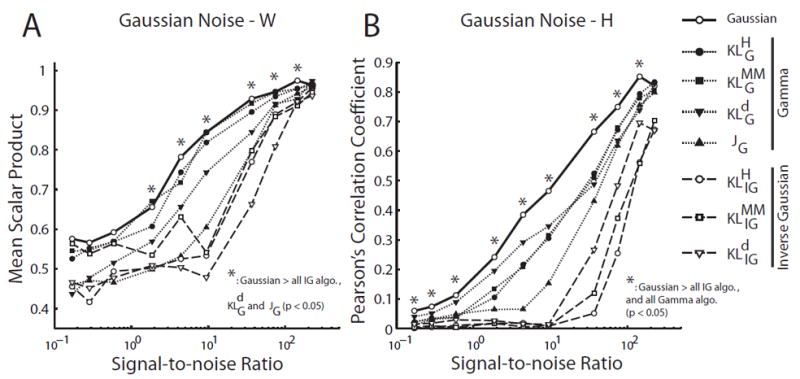Figure 8.

Gaussian NMF outperformed the signal-dependent noise NMFs in data sets corrupted by Gaussian noise. We evaluated the performance of each algorithm in simulated data sets (N = 10) generated by known W (15 × 5 matrix) and H (5 × 5000 matrix), but corrupted by random Gaussian noise at different signal-to-noise ratios (SNR). A, Performance of NMF algorithms in identifying the basis vectors (W). Performance of each algorithm in each data set was quantified by the scalar product between the extracted vectors and the original vectors, averaged across the 5 basis vectors in the W matrix. Shown in the plot are mean scalar product values, defined as above, averaged across 10 simulated data sets. The Gaussian NMF algorithm outperformed all IG-based NMF algorithms and 2 of the gamma-based NMF algorithms ( and JG) over a wide range of SNR (*; Student’s t-test; p < 0.05). B, Performance of NMF algorithms in identifying the coefficients (H). Performance of each algorithm in each data set was quantified by the Pearsons correlation coefficient (ρ) between the extracted coefficients and the original coefficients (over a total of 5 × 5000 = 25,000 values). Shown in the plot are ρ values averaged across the 10 simulated data sets. The Gaussian NMF algorithm outperformed all of the gamma- and IG-based NMF algorithms over almost all tested SNR (*; p < 0.05).
